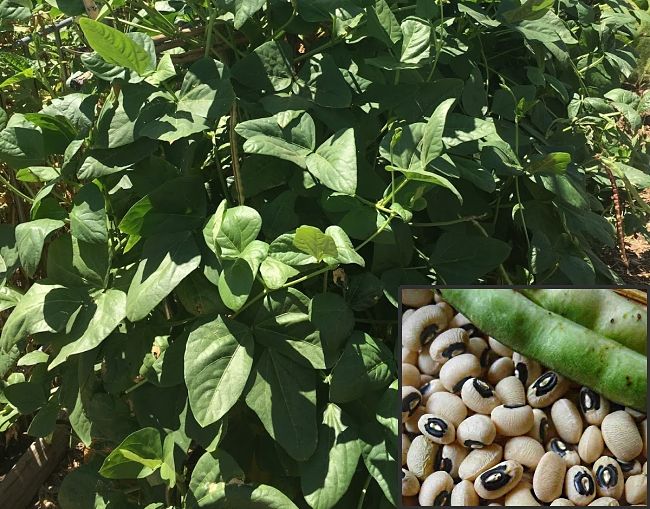Planting and Growing Guide for Southern peas (Vigna unguiculata)
Description
Southern peas, also known as Cowpeas or black-eyed peas are a summer legume crop, grown for their pods and seeds. The young leaves can be picked early and eaten raw as a salad green. As a legume they grow more like beans than peas and should be grown as such. Many people grown them as an alternative to green beans. There are many varieties available with some plants growing as a trailing vine, others as a bush like beans. Some common varieties are: crowder, big boy, cream, purple-eyed, black-eyed, cowpeas and Queen Anne. Various types produce their peas at different times throughout they year. Choose varieties that are known to do well in you local area. Black-eyed peas are a summer season crop and require warm conditions to grow to maturity. Black-eyed peas require full sun and plenty of space, especially for vines which spread. Regular watering is also required. Black-eyed peas do not transplant well, and should be sown directly into garden beds just after the last spring frost.
Planting Guide
Seed Depth: Plant seeds with the eyes facing down in moist soil, about 20-30 mm (1 inch) deep. Plant in rows about 50-60 cm (2-3 feet) apart. Seedlings will come up in about 10-14 days depending on soil and weather conditions.
Space between plants: 50-70 cm (2-4 inches). Thin when seedlings grow larger to 25 cm (10 to 12 inches) apart to avoid overcrowding.
Harvest Time: Can be harvested, initially as a snap pea, after about 60 days, or as a dry bean after about 90 days.
Hints:
- Does best in rich, well-drained soil with well rotted compost or manure dug into the root zone
- Regular watering is required especially when plants are small, but spray roots rather than the plants
- Require less fertiliser than other plants
- Watch out for pests and diseases. Ensure the seed is wilt-resistant.
- Frost tender, so plant seeds after the last expected frost
- Adjust soil pH to neutral or slightly acid pH 6.0-7.0)
- Plant seeds in batches, every 2 weeks, for continual harvest through summer

Disclaimer: The PlantWhatWhen vegetable planting guide is only designed for use as a very general reference for home gardening purposes. It is not to be used for farming, markets or commercial activities of any kind whatsoever. We take absolutely no responsibility for the accuracy and adequacy of the information provided on this site. We recommend that you consider your local climate, weather patterns and conditions when deciding what and when to plant in your home garden. It's entirely your own decision. Happy Gardening and Best Wishes!